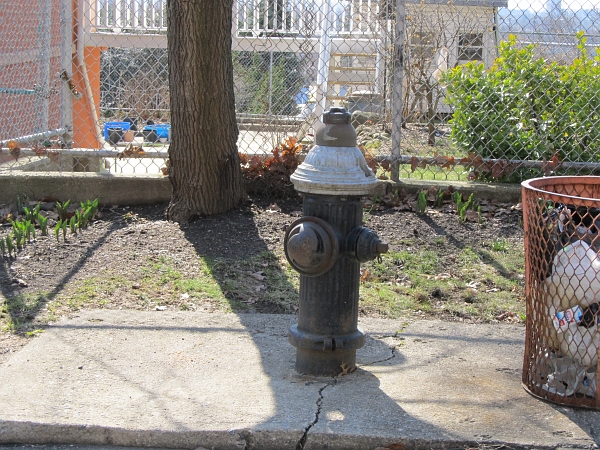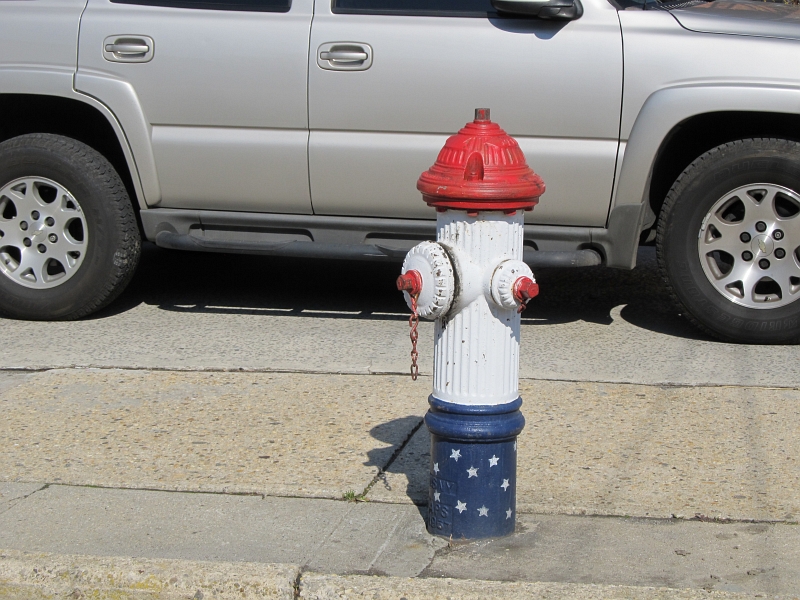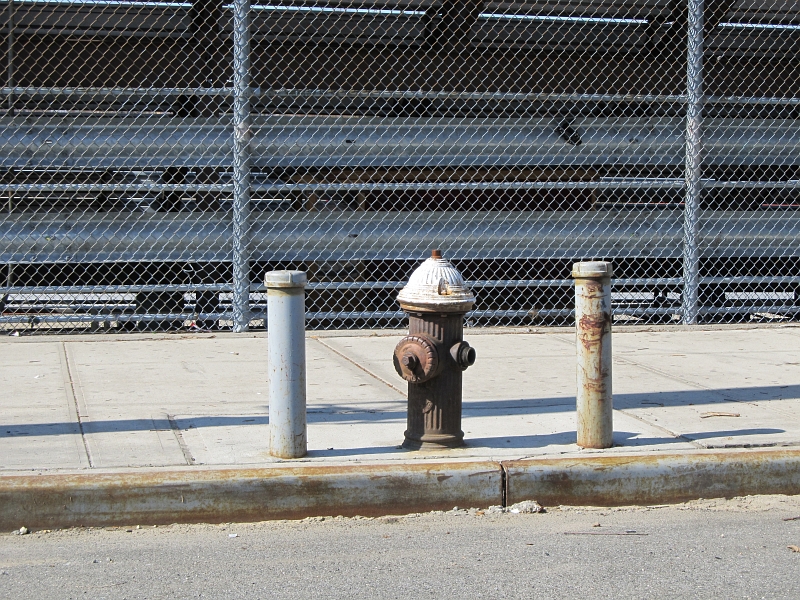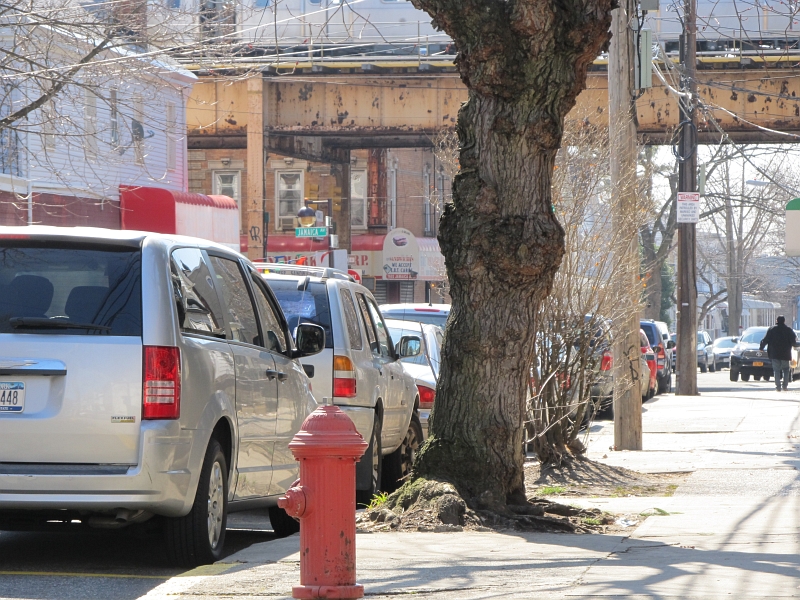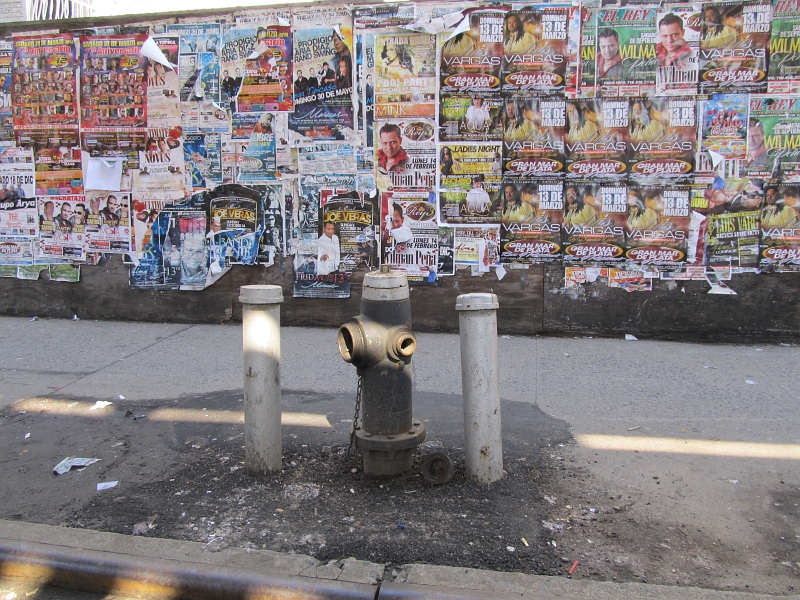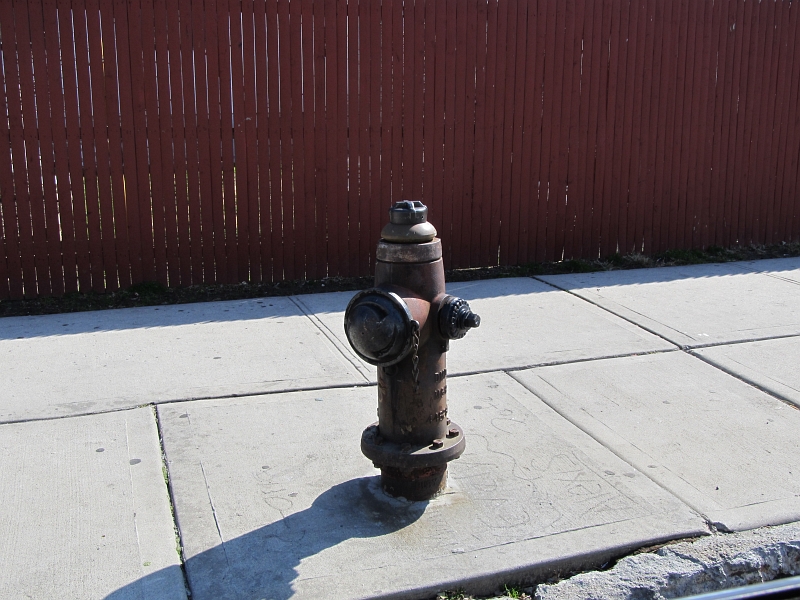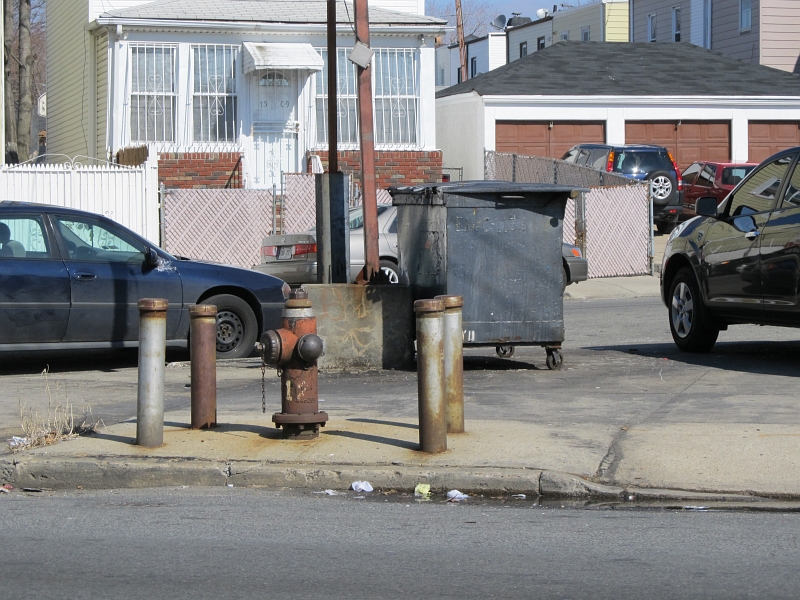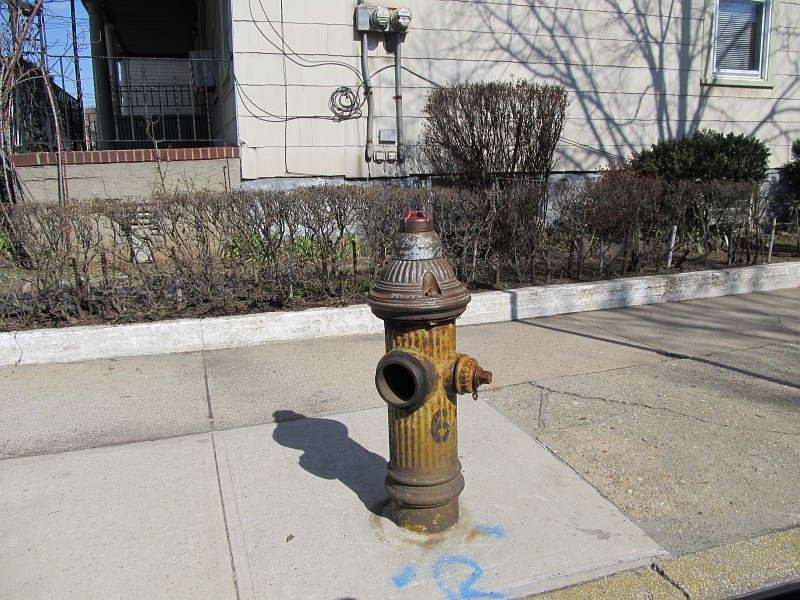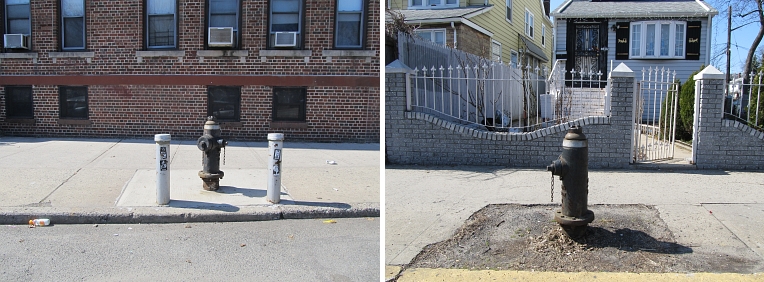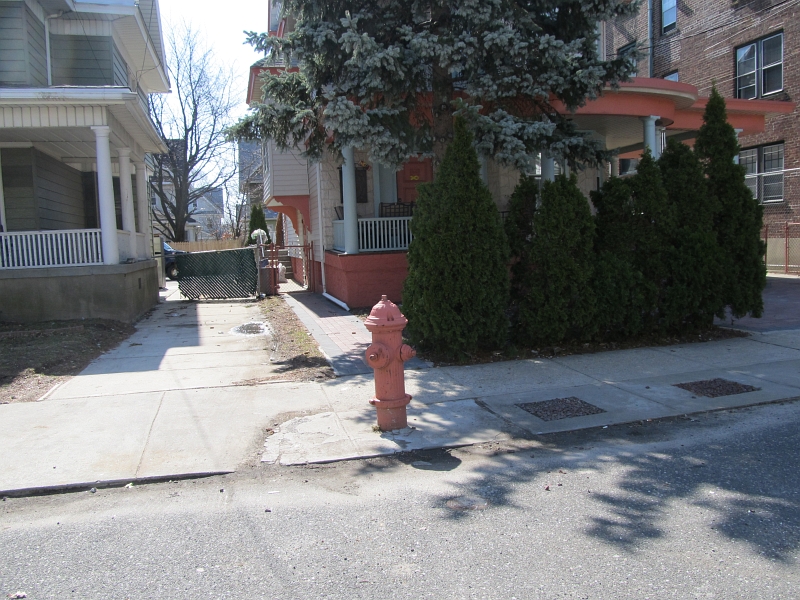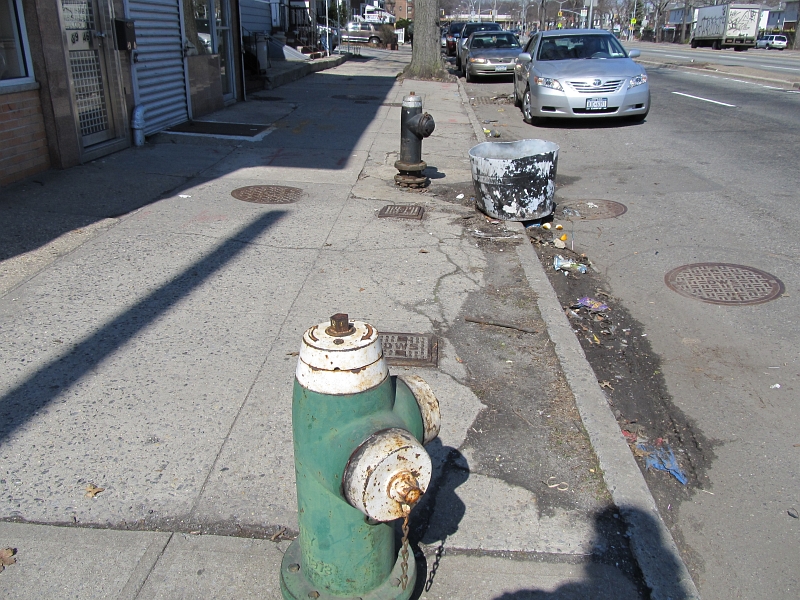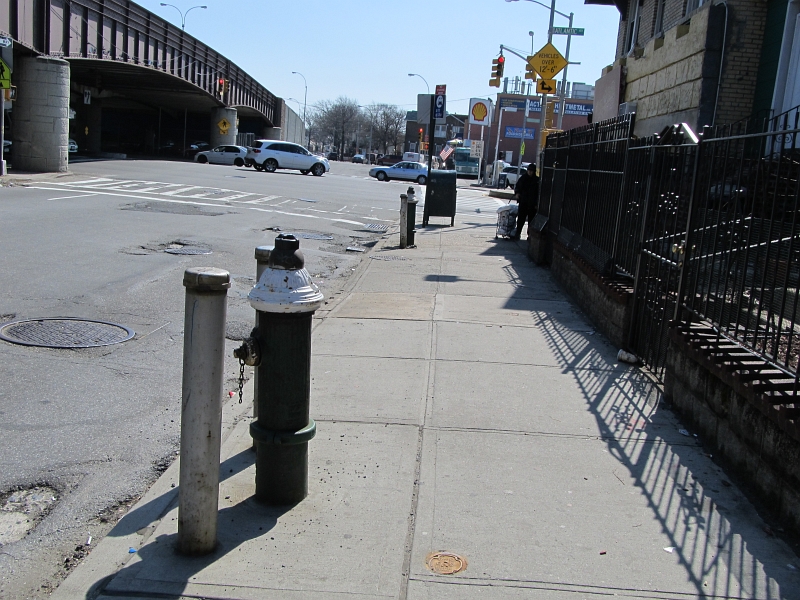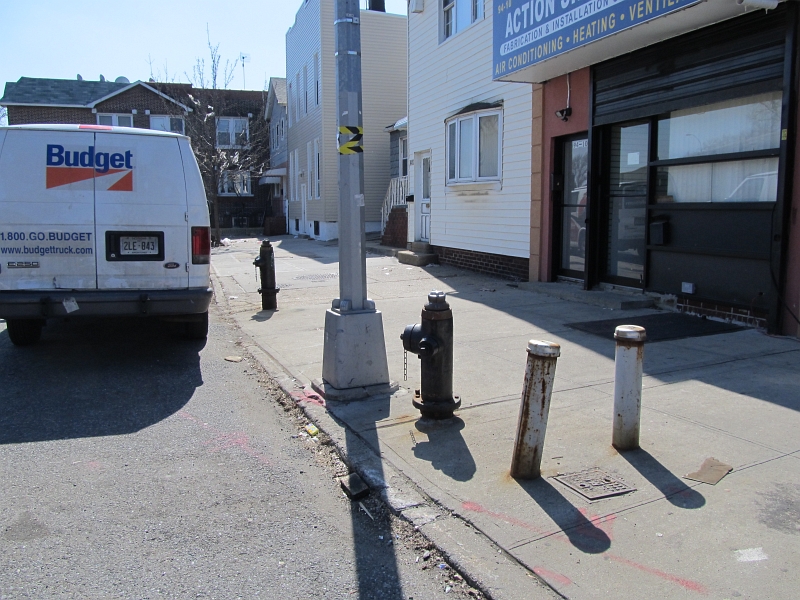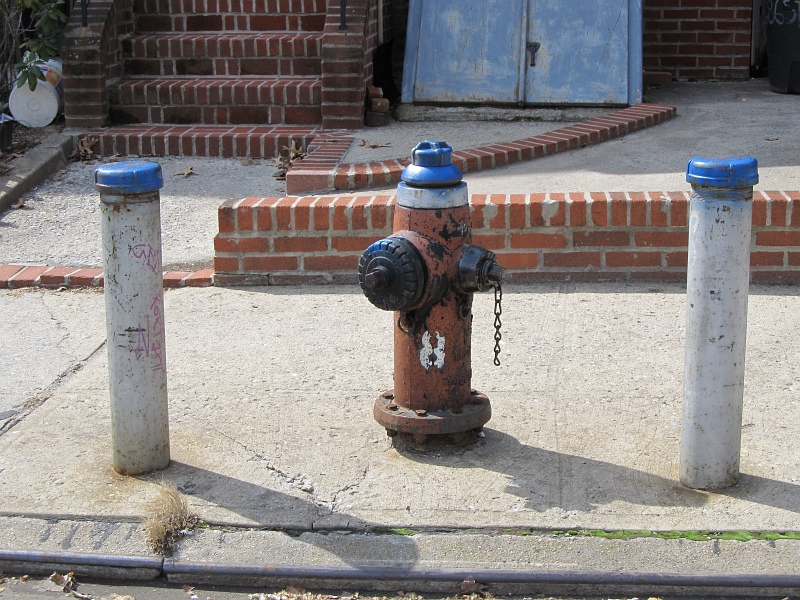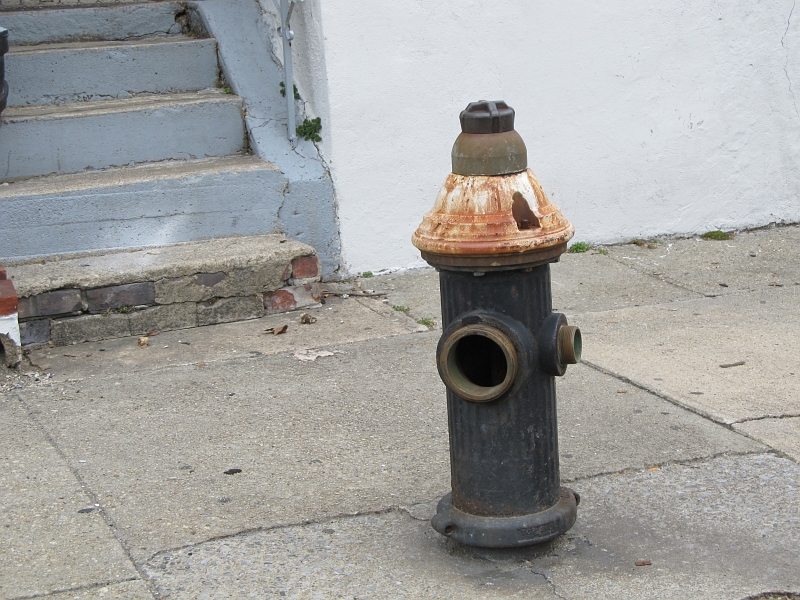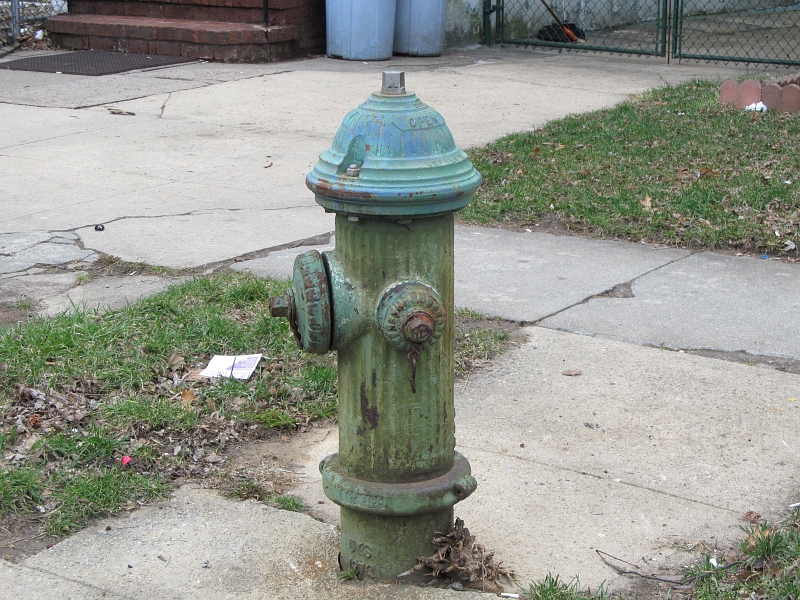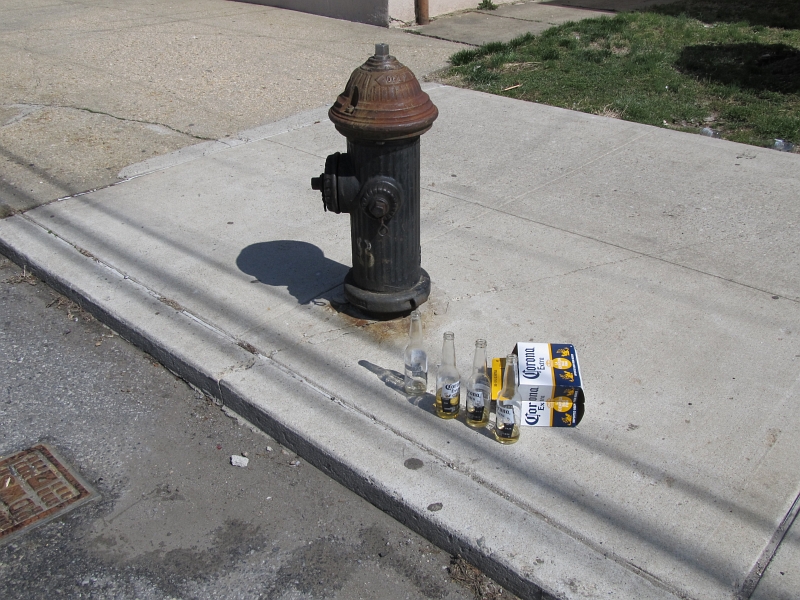



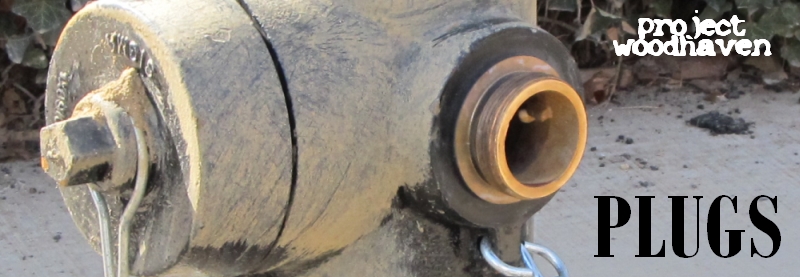
We pass by them dozens and dozens of times each day, and rarely give them a second thought. But should the time come that you ever need one to put out a fire, we bet you would know where the nearest one sat. Do a little exercise right now -- close you eyes and think about it. Where's your closest fire plug? What does it look like? What color is it? Because as we recently found out as we drove around Woodhaven -- there are all types, shapes and colors around here.
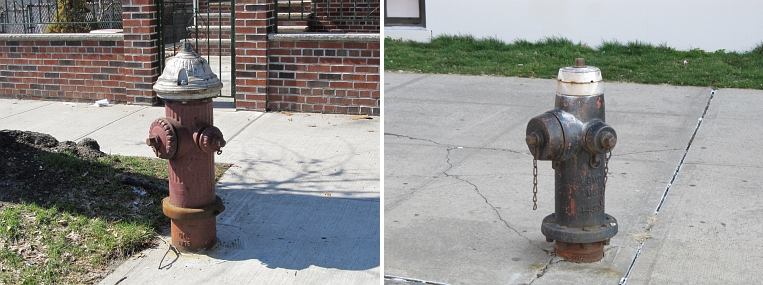
There are 2 basic types of fire hydrants (or as they were also commonly known around here -- Johnny Pumps). The reddish one at the left (above) is the older style of hydrants in NYC. This style is called the O'Brien Model and first appeared on NYC City streets around 1902. The hydrant at right is the Dresser Model, and although they date back as far as the 1920's they weren't introduced to NYC until the mid 1980's. However, there are a few older models around. Typically they are stamped with "M&H" signifying the "M & H Valve Company" which was acquired by Dresser in 1961. So while these may have been manufactured before 1961 it isn't clear when they were installed. Maybe someone out there has more information.
You will see them outfitted with various parts and attachments, giving each it's own unique look. This model was named O'Brien after Denis O'Brien of County Kerry, Ireland, the inventor who designed this style of hydrant. In the very early days of firefighting, they used to dig a well until they hit water -- then they would plug it up until it was needed (hence the name fire plug).
New York City's first fire hydrant was installed in lower Manhattan in 1808 and was made out of wood. Various models were tried and tested and used until the city settled on Mr. O'Brien's model in 1902. It has been saving lives ever since. And if it's set high above the cement, you can see the year it was manufactured -- this one above, you can see, was manufactured in 1978. Here's a closer look:
Originally, fire plugs were painted different colors to indicate the flow of water available, but that must not matter much around here because over the years people have gotten creative -- and patriotic! Look at this beautiful red, white and blue plug below -- looking great with that beautiful classic car in the background.
Here's another patriotic entry -- complete with stars! BTW, this hydrant was manufactured in 1957.
Here we have a hydrant with protective poles on either side of it. Some hydrants have protective poles, some hydrants don't. Now, newer O'Brien models have a breakaway flange (invented in the early 1960s) -- meaning that a car can come by and knock it over and the hydrant can snap off but you won't get a water spout shooting in the air. At first, our theory was that the older hydrants got the protective poles, but the one above was built before breakaway flanges and it doesn't have protection. If anyone knows the answer, drop us a line!
The fireplug is such a part of our landscape -- it saves lives and some folks use it to spray water and cool off the kids during the hottest days of summer. If you are interested in learning more about how a hydrant works and the environmental impact when it is uncapped and used as a water spray, click here to read a wonderful article from the Architectural League of New York.
One of the Dresser models, so called because it was manufactured by Dresser Industries in PA. Hard to believe these are newer than the O'Briens. They tend to seem a little bit more beat up. This one's caps are off, one laying on the ground. But it's protected! Wow, it looks like someone posted one or two signs back on that wall.
Again, you'll see a lot of the same parts on both hydrants -- over time, other manufacturers signed contracts to provide parts to the city, and many of them can be used on either hydrant.
Wow, this one has lots of protection! This also has the M&H stamp, so it may be an older model of this type.
I seem to recall most, if not all of these hydrants being yellow when I was a kid -- am I wrong about that? Here's another weird thing -- a lot of them have numbers stenciled on them. This one is a Number 6.
Here's two more protected hydrants.
Here's another protected one -- and then an unprotected one that looks like it could use some protection!
Hey, here's a nice one -- painted to match the trim on the house. Very nice!
Okay, here's a mystery -- check out these two unprotected plugs. Check out how close they are to one another. This is on Woodhaven Boulevard (across from where St. Anthony used to sit).
Here we are closer to Atlantic -- another two hydrants (these ones protected) within spitting distance of each other.
And then, just over the border, another two hydrants side by side. One protected, one not. We'd love to hear an explanation of this. We're not saying there's anything wrong with it -- it's probably something we don't understand. But it's weird, no?
Here's a Number 8 -- with blue topping!
Here are a few Number 12s -- the curb in front of the one on the right is painted yellow, a rarity nowadays. Currently there is no parking 15 feet on each side of the hydrant. There is a bill making its' way through the City Council that would decrease that distance to 10 feet -- and would require the city to paint the curb red.
Here's a sad looking one -- needs a cap and some paint.
The O'Brien, painted green.
And we'll wrap this up with one that looks like it might have had a long night --
If you have any comments, or would like to suggest other projects, drop us a line at info@projectwoodhaven.com or projectwoodhaven@aol.com .
